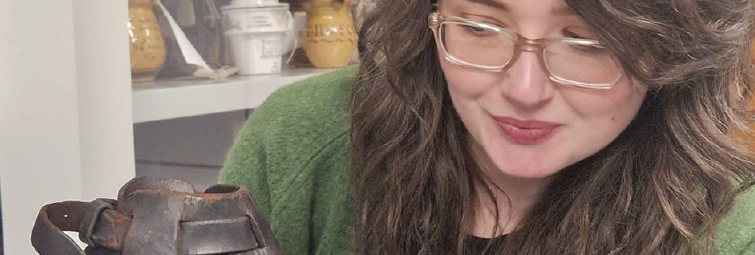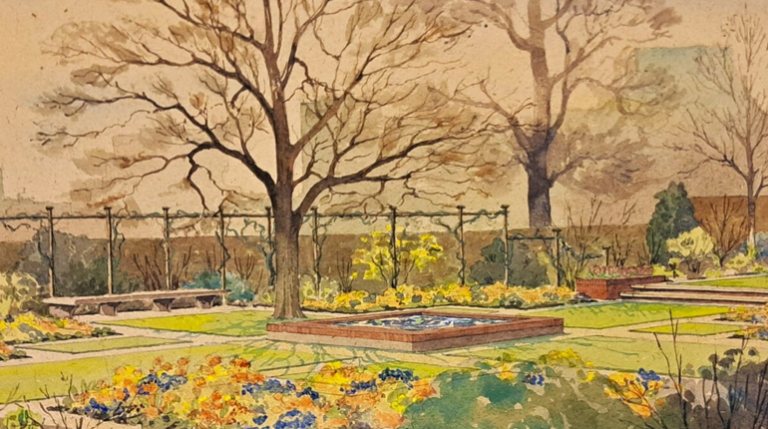Consuming the fat cows
-
Author
- Alison Hilton
-
Published Date
- October 25, 2015

<<<<<<
New ideas on the farm
Methods of livestock improvements included the shortening of the period between birth and maturity for meat-producing animals. Flesh was redistributed upon the most edible parts of the body, and the weight of the animal carcass was increased. Farmers developed a number of pioneering ways to achieve these adaptations. The in-breeding and line-breeding of cattle allowed the most desirable qualities to be selected, and fixed, by mating within a single breed. Out-crossing cattle allowed for new qualities to be sought across various breeds, and fixed in one new breed by mating. The latter could also include the import and use of animals from overseas on British stock.
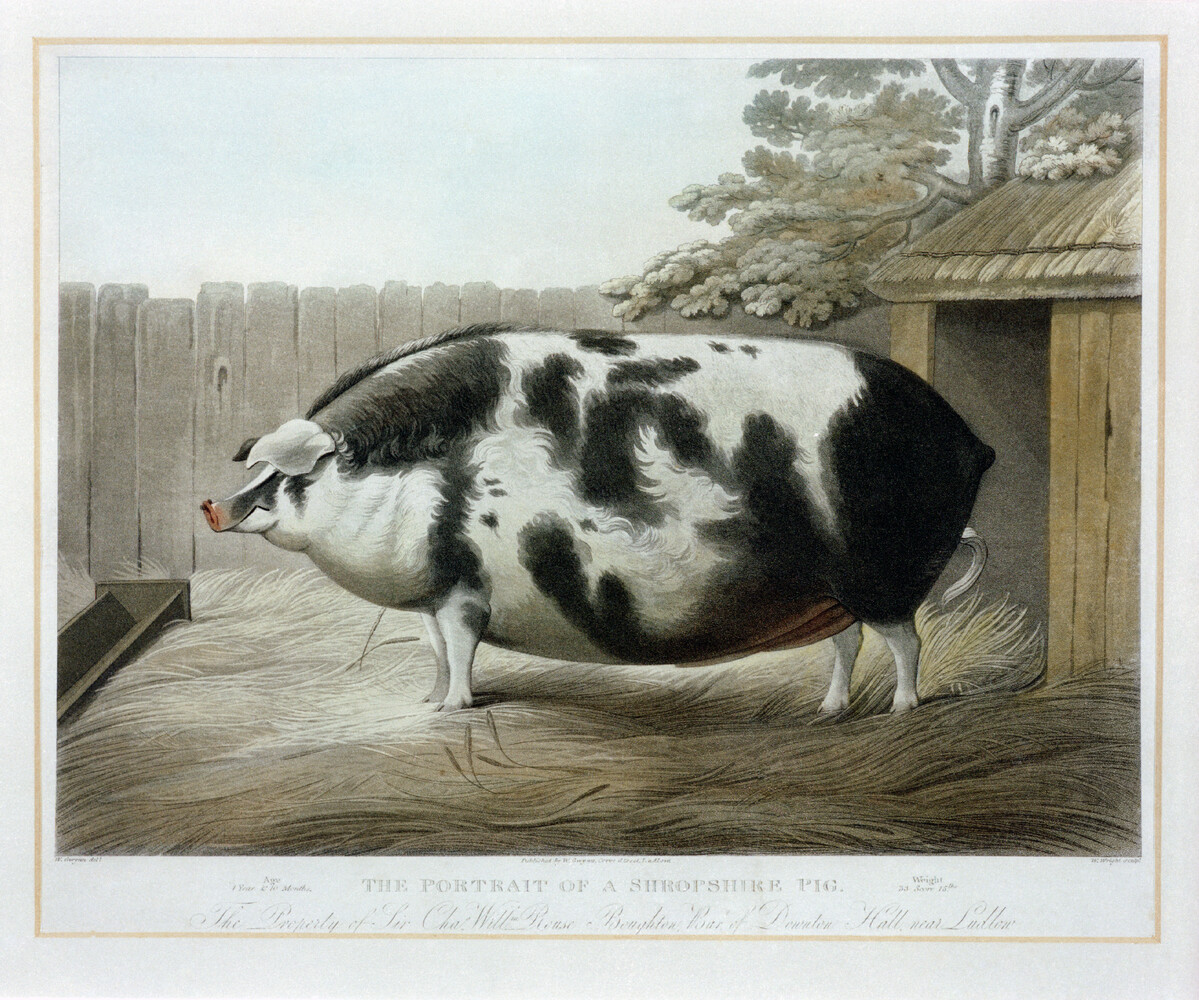
Existing animals were diminutive when compared to the improved livestock bred after the mid-18th century. The growth was ‘rapid and wonderful, like their evolution into distinctive breeds’ (Walker’s Monthly, 1936).
The tradition of livestock portraiture
Livestock portraiture developed out of the tradition of sporting painting. Sporting pictures reflect a passion for field sports and country life. Under the patronage of gentleman, paintings depicted scenes of hunts and races, with portraits of greyhounds and horses.

Agricultural enthusiasts followed suit and commissioned painters to record their favourite and prize winning animals. Paintings were prepared at the expense and upon the instruction of gentleman breeders for whom pedigree breeding was a fashionable hobby. The portraits, most often of a specific animal, were executed in side view and often included the individual animal’s name, pedigree and physical description. Over-fed animals were represented because of their high meat or milk yields. The animal’s physical appearance, corpulence and lineaments were captured by the painter.
Artists were often itinerant sign painters; a law passed in 1763 limited the number of shop-signs on London streets meaning craftsmen were looking for work. However, some painters were able to earn a handsome living from the patronage of their breeders.
Artists were often encouraged to over-emphasise the effects of improved breeding. In a 1964 catalogue of the livestock painting collection held at MERL, the author notes that the commissioner ‘paid for exactly what he held in his eye as the most desirable features … they were to be figured monstrously fat before the owners of them could be pleased’ (Jewell, 1964).
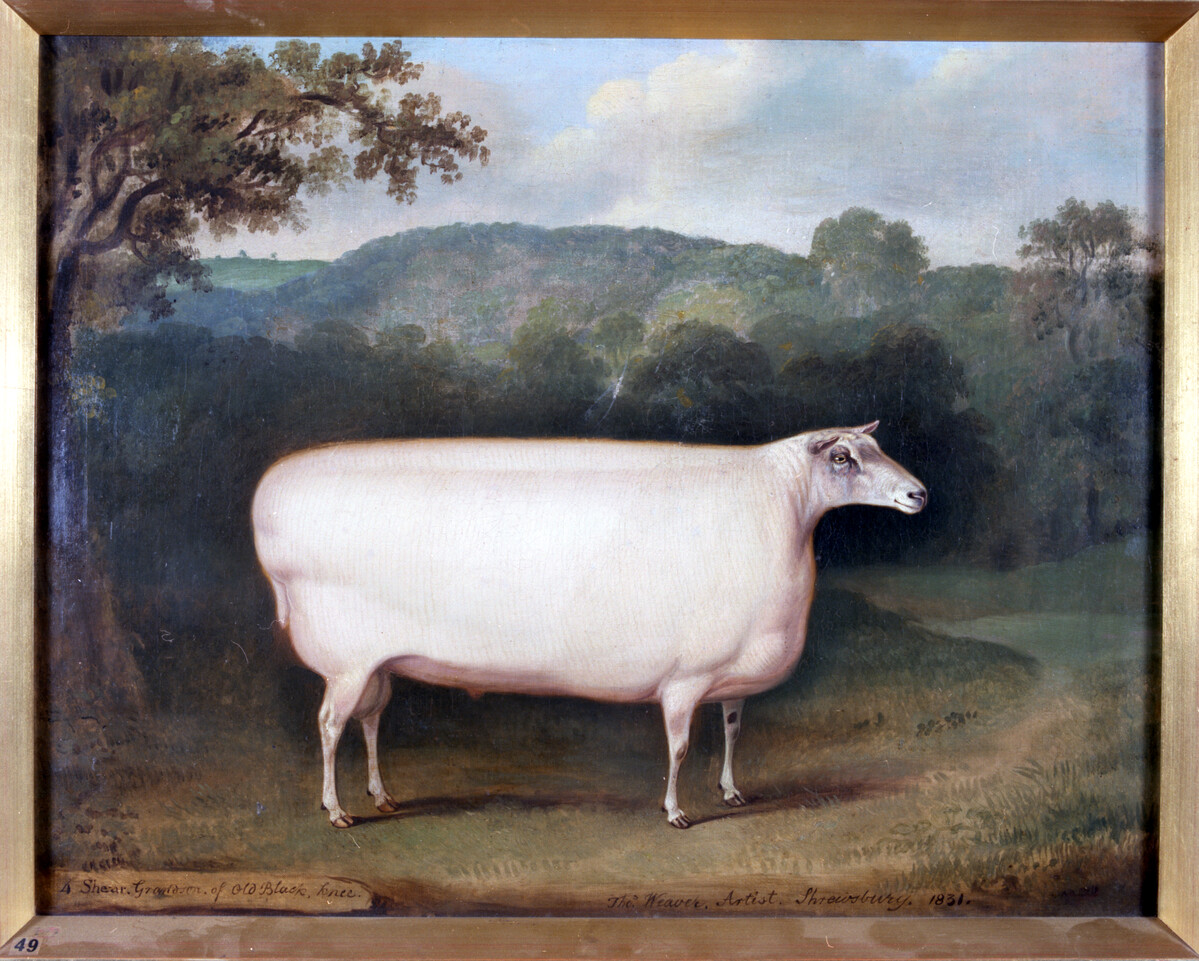
It is worth remembering that considerable licence was practiced – and expected – from the painter and engraver. Likewise, the preoccupation with fashionable breeds means the paintings are not always representative of the range of British cattle and sheep.
Painters
William Henry Davis is considered to be one of the most prolific artists. Already a reputable sporting painter, Davis responded to the demand for livestock portraiture by utilising lithography and publishing within his practice. Farmers’ Magazine, the agricultural journal, commissioned Davis to record winning animals at agricultural shows. This association lasted for almost 30 years and resulted in over 160 livestock paintings being reproduced in the publication.
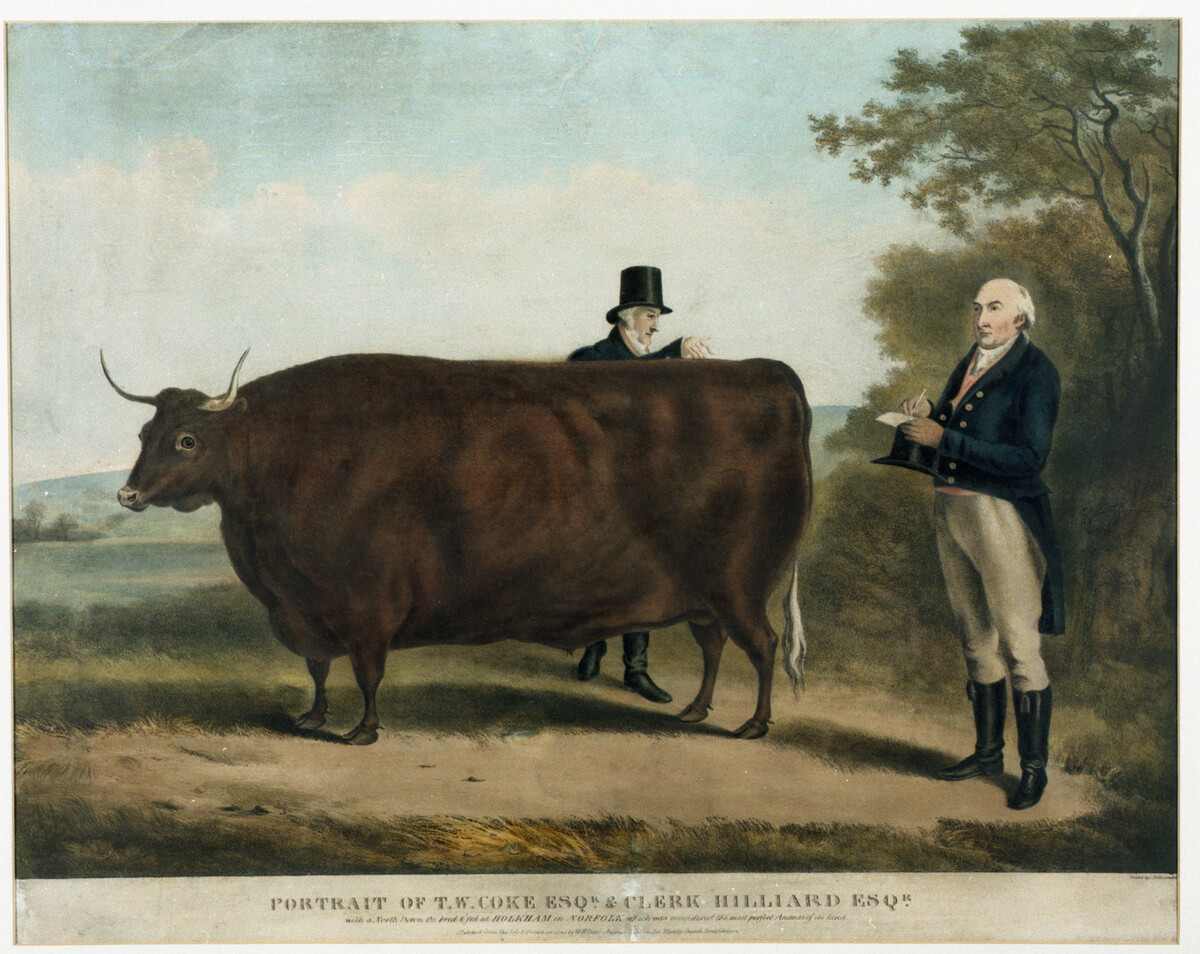
Consumption of images
With the establishment of agricultural societies, innovations in breeding received impetus by circulating new ideas in journals like Farmers’ Magazine. Publishing images of livestock portraiture in animal husbandry books was an ideal way of disseminating new practices to farmers, many of whom were illiterate. Early breeders were therefore not only ‘involved in improving their own livestock but conscious of the need to disseminate their ideas and advertise their practice’ (Ayrton, 1982).
As agricultural societies spread and as methods of transport improved, animal shows were organised. This was an opportunity to bring together, in fierce competition, breeders and their stock. Prizes meant enhanced reputations. The subsequent demand for livestock portraiture to capture these decorated animals was high. The most remarkable beasts travelled as popular exhibitions and profitable wonders. Prints were sold as tickets or as souvenirs of the spectacle. The paintings and prints functioned both as advertisements for animals available to stud, but also to ‘reinforce their owner’s amour propre‘ (Melly, 1982).
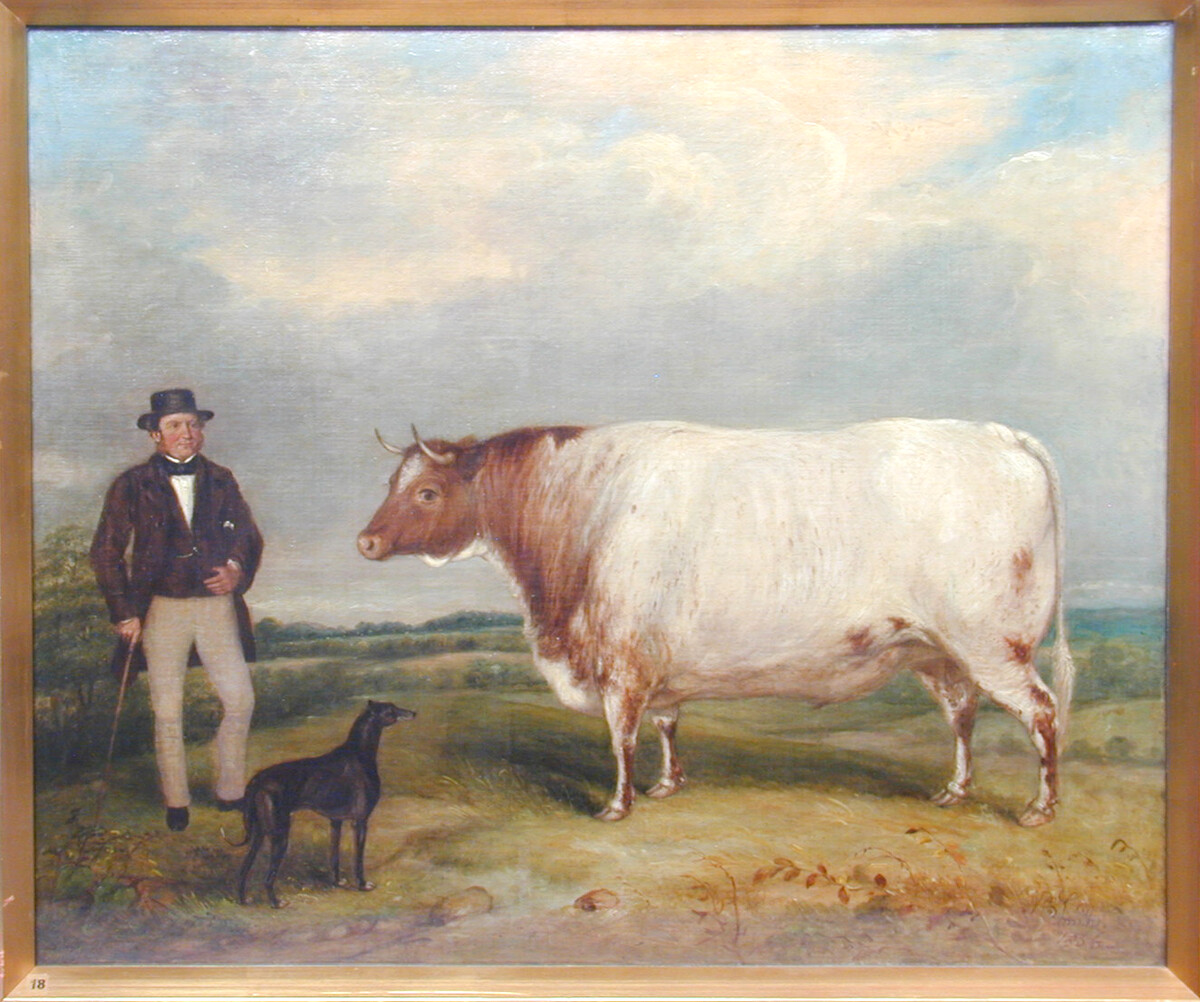
Portraits therefore upheld and reinforced the success of the improved breeds. ‘Breed was nothing more than an ingenious marketing and publicity mechanism. Certain identifiable physical characteristics were imprinted in animals of a particular strain, and prospective purchasers were then encouraged to associate those markers with some attribute or attributes of productivity […] the success of a breed depended to some extent on the visual impact of the chosen marker or trade mark’ (Walton, 1986).
Testament to their visual impact, the consumption of prints flourished. Producing prints to be hung on walls was an entirely new venture which emerged at the end of the eighteenth century.

Etchings, mezzotints, aquatints and lithographic prints are represented in The MERL collection. To satisfy commercial requirements, many prints are coloured by hand to replicate the original artworks.
Operating in a time before photography, the artworks also became an important means of advertising. Manufacturers of animal food adopted the livestock portraiture aesthetic to foster early graphic sales promotions.
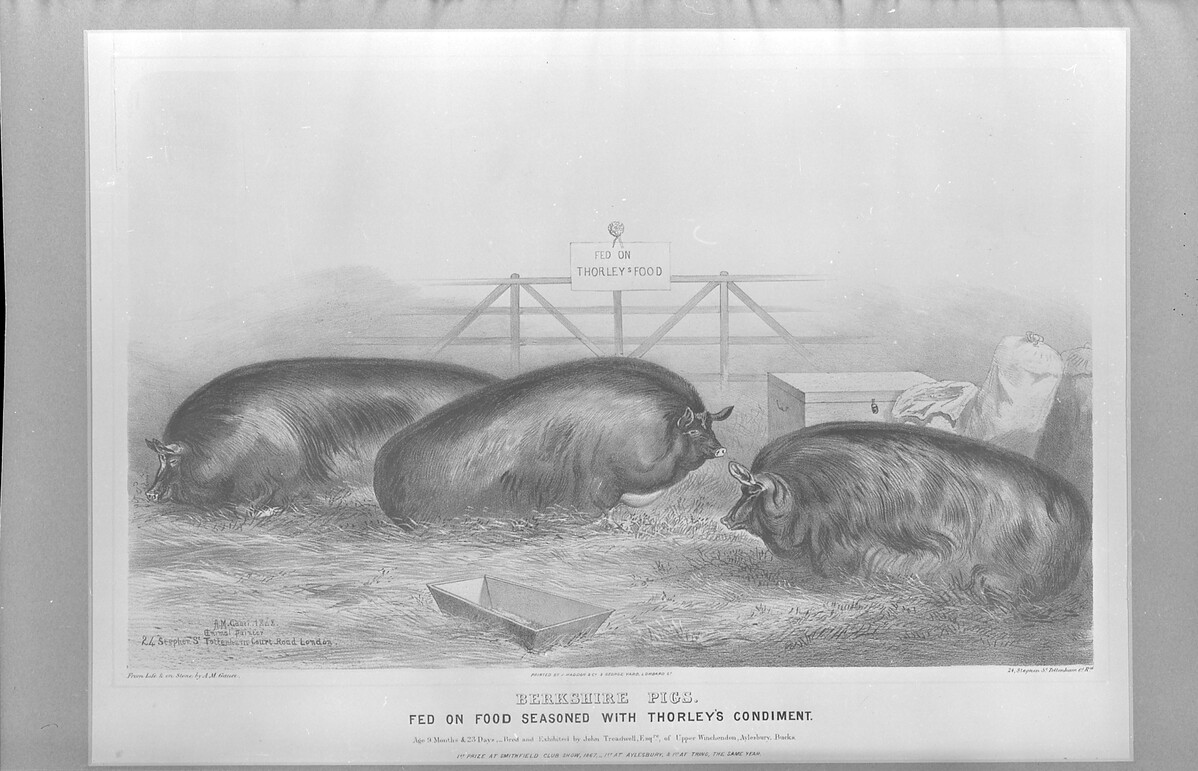
This is a tinted lithograph print from an original painting, ‘Berkshire Pigs’, by A. M. Gauci, of Tottenham Court Road, Camden, in 1868. The inscription on the print reads ‘Berkshire pigs fed on food seasoned with Thorley’s condiment’. The pigs won 1st prize at the Smithfield Club Show in 1867.
Collections, research, and buying prints
The collection of livestock portraiture at The MERL consists of both paintings and prints, and are available for researchers to view by appointment. To plan a visit, please contact the University Art Collections.
If you’re interested in buying prints of the livestock portraits in The MERL collection (because why wouldn’t you be), please head to our official online shop on Art UK. Find the perfect decoration for your home, or the choice gift for the rural history enthusiast in your life.
Alternatively, get in touch with The MERL licensing team for any other enquiries.


